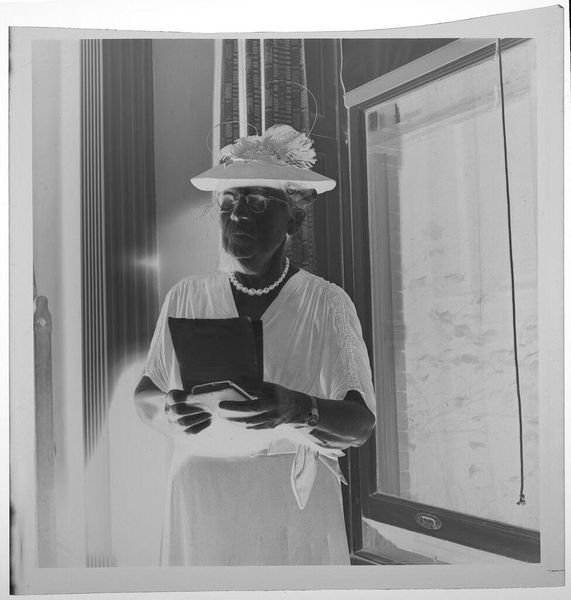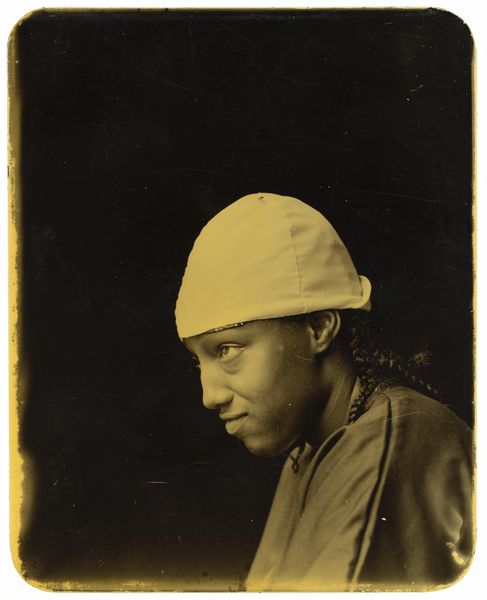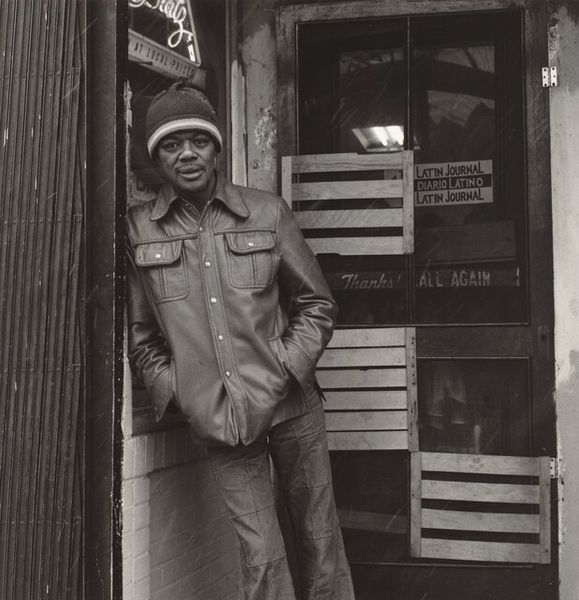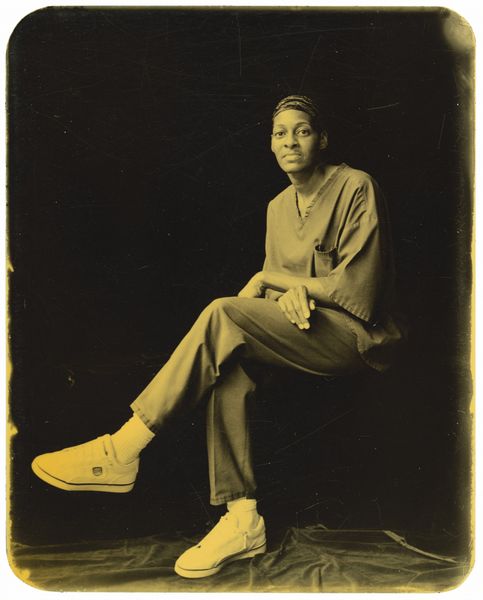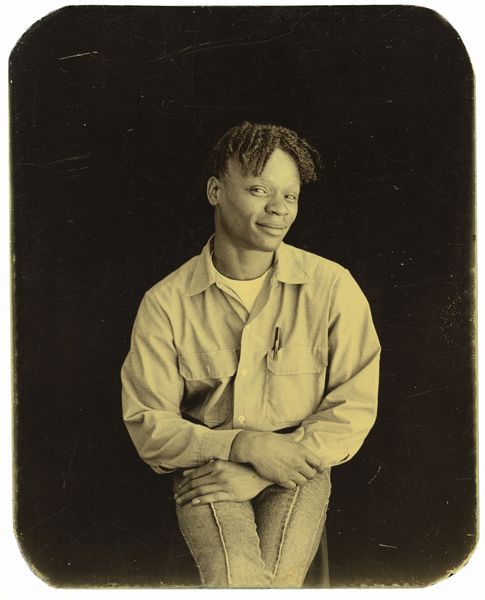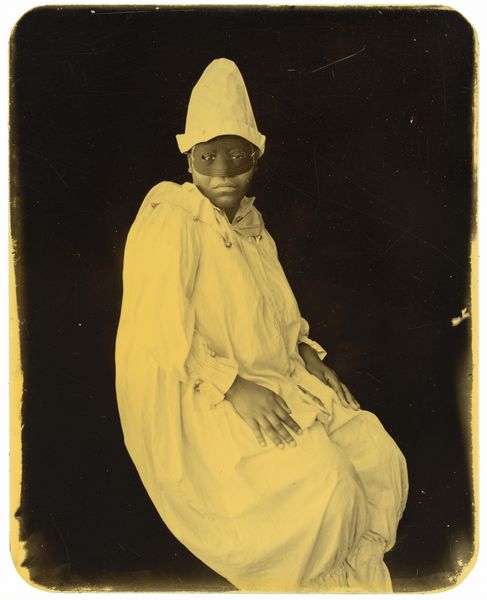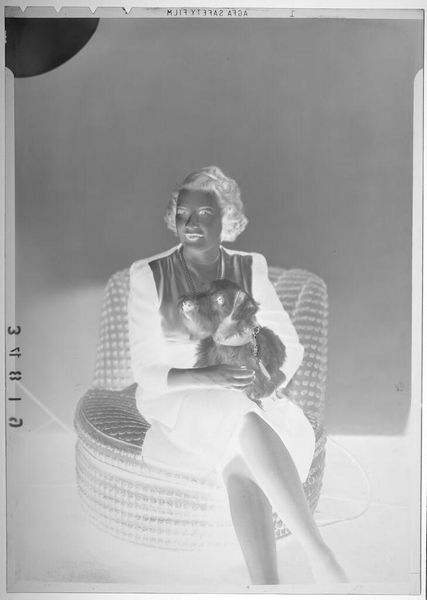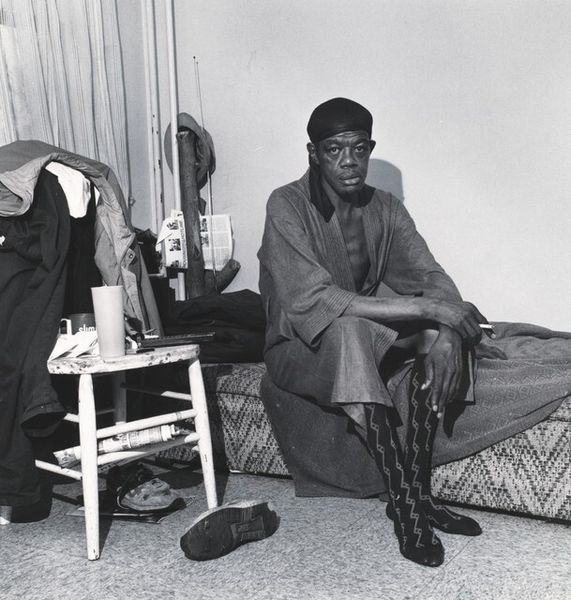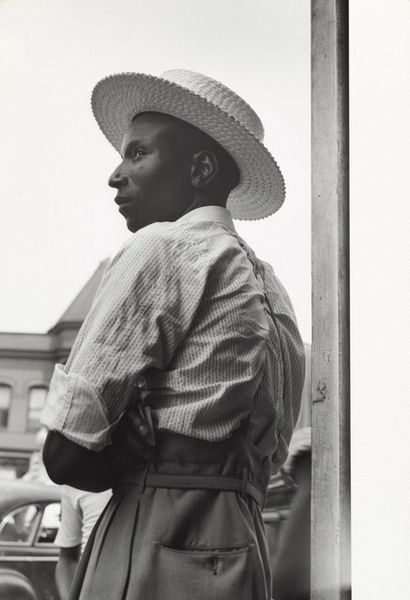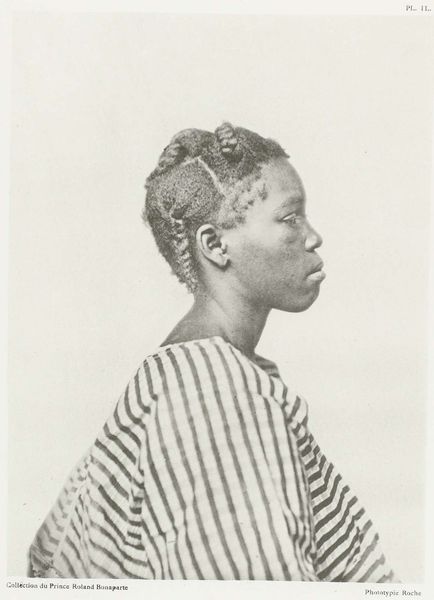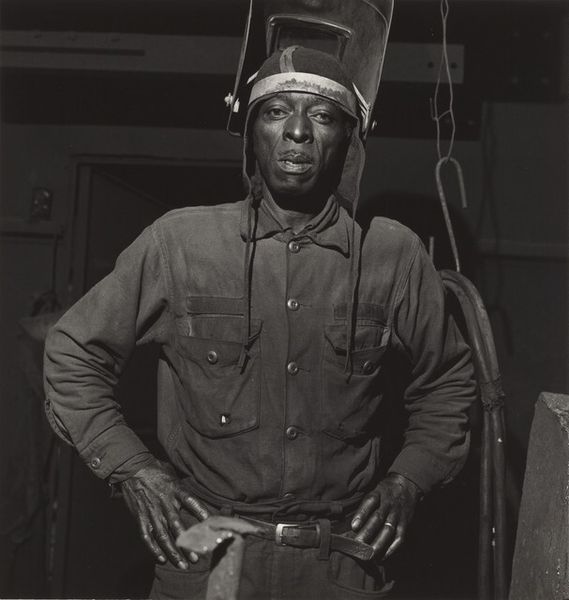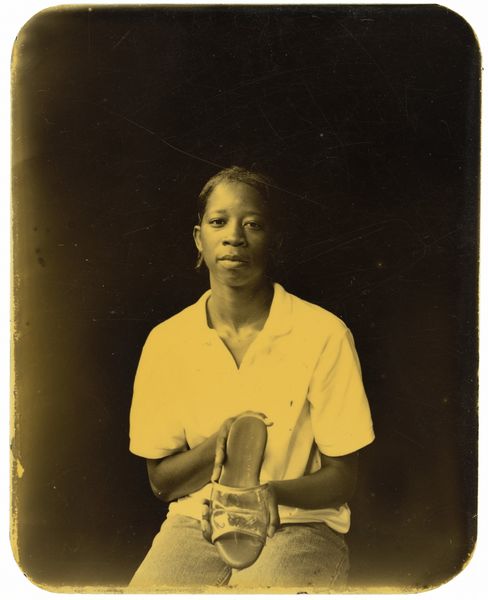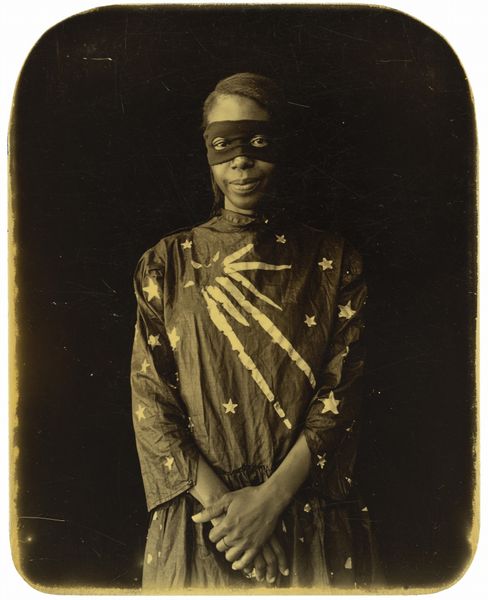
photography
#
portrait
#
conceptual-art
#
postmodernism
#
appropriation
#
photography
#
monochrome photography
#
monochrome
Copyright: Cindy Sherman,Fair Use
Curator: We're looking at an Untitled photograph by Cindy Sherman from 1976. The image is a monochromatic portrait of a figure seated against a stark wall. What’s your immediate impression? Editor: There's an air of vulnerability. The hooded figure, clutching those books, seems almost cornered, not physically threatening at all, just kind of... trapped in a story I don't know yet. Curator: Sherman's work often grapples with constructed identities. This photograph, one of her earlier works, demonstrates a shift toward a critical engagement with material culture through the use of basic materials and an emphasis on the subject and their environment. The materials feel utilitarian, right? Editor: Utilitarian is spot-on. That setting-- bare walls, an awkward chair, basic clothing; I wonder, is she creating a character, or is she capturing herself stripped bare? It gives off the impression of documentation; someone just recorded in an anonymous setting. Curator: In that case, we can argue she is capturing the social conditions surrounding an entire identity and representation. She emphasizes these things and creates, through a calculated and deliberate artistic creation process, an investigation into photography, the conditions of artistic making and appropriation, and social context. Sherman takes a very deliberate role as a subject, engaging with themes that blur the line between self and representation. Editor: Yeah, it makes you consider what “self” really *is* then, if it’s so readily performed, or constructed. Maybe the bare setting really is symbolic, something being unboxed, taken from its commercial place, unpacked, just, raw. Curator: Precisely. And the act of taking photographs serves as an important indicator that emphasizes Sherman's commitment to artistic practice and process as she challenges what defines art and its traditions. Editor: Seeing Sherman engage with it, though, kind of throws that assumption of truth out the window for me. It's not so much documentary, even though it mimics documentary aesthetics, it feels theatrical, like a play. I leave thinking about where Sherman begins and I end, what expectations have I added, what prejudices of what something even "is" get activated in this play between us. Curator: It’s a perfect distillation of the complexities that Sherman is beginning to unpack. Looking closely at artistic process offers us new opportunities for insight. Editor: Right, and isn't that thrilling? Thank you, Cindy, wherever you are!
Comments
No comments
Be the first to comment and join the conversation on the ultimate creative platform.
